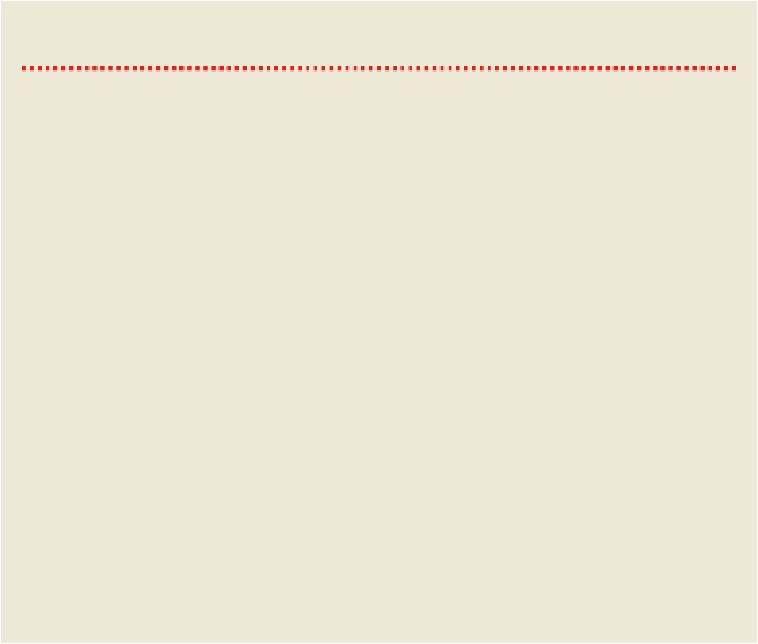Travel Reference
In-Depth Information
DON'T MISS
CHOLA TEMPLES NEAR KUMBAKONAM
Two of the three great monuments of Chola civilisation stand in villages near Kumbakonam. Unlike the also
World Heritage-listed Brihadishwara Temple at Thanjavur, these temples receive relatively few worshippers
today. They are wonderful both for their overall form (with pyramidal towers rising at the heart of rectangular
walled compounds) and for the exquisite detail of their carved stone.
Only 3km west of Kumbakonam in Darasuram village, the
Airavatesvara Temple
(admission free;
6.30am-8.30pm), dedicated to Shiva, was constructed by Rajaraja II (1146-63). Guides can explain everything in-
side for around ?100. The steps of the Rajagambhira Hall are carved with vivid elephants and horses pulling
chariots. This pavilion's 108 all-different pillars have a plethora of detailed carving including dancers, acrobats
and the five-in-one beast Yali who has an elephant's head, lion's body, goat's horns, pig's ears and the backside of
a cow. On the outside of the main shrine are several fine carved images of Shiva. Inside the
shrine
( 6am-
noon & 4-7pm) you can pay your respects to the central lingam and receive a
tilak
mark for ?10. The
Nataraja
Mandapa
contains a museum of sculptures from the site plus boards of historical information.
The
temple
(admission free; 6.30am-8.30pm) at Gangaikondacholapuram ('City of the Chola who
Conquered the Ganges'), 35km north of Kumbakonam, is also dedicated to Shiva. It was built by Rajendra I in
the 11th century when he moved the Chola capital here from Thanjavur after successful campaigns in northern In-
dia. The temple has many similarities to the earlier Brihadishwara at Thanjavur. Its beautiful 49m-tall main tower,
however, has a slightly concave curve, in contrast to the mildly convex one at Thanjavur. Gangaikon-
dacholapuram is thus considered the 'feminine' counterpart to the Thanjavur edifice.
A large Nandi bull (Shiva's vehicle) faces the temple from the surrounding grassy lawns. The main shrine, be-
neath the tower, contains a huge lingam and is approached through a long, gloomy, 17th-century hall. The com-
plex's artistic highlights are the wonderfully graceful sculptures around the tower's exterior. These include Shiva
as the beggar Bhikshatana, immediately left of the southern steps; Ardhanarishvara (Shiva as half-man, half-wo-
man), and Shiva as Nataraja, on the south side; and Shiva with Ganga, Shiva emerging from the lingam, and
Vishnu with Lakshmi and Bhudevi (the first three images on the west side). Most famous of all is the beatiful
panel of Shiva garlanding the head of his follower, Chandesvara, beside the northern steps.
From Kumbakonam bus stand, frequent buses heading to nearby villages will drop you at Darasuram; buses to
Gangaikondacholapuram (?19, 1½ hours) go every half-hour. An autorickshaw to Darasuram costs about ?120
round trip. A half-day car trip to both temples, through Hotel Raya's (
Click here
), is ?950 (?1100 with AC).
TOP OF CHAPTER
Thanjavur (Tanjore)
04362 / POP 222,619
Here are the ochre foundation blocks of perhaps the most remarkable civilisation of
Dravidian history, one of the few kingdoms to expand Hinduism beyond India, a bedrock
for aesthetic styles that spread from Madurai to the Mekong. A dizzying historical legacy
was forged from Thanjavur, capital of the great Chola Empire during its heyday, which is
today…a hectic, crowded, noisy, modern Indian town. But the past is still very much
present: every day thousands of people still worship at the Cholas' grand Brihadishwara







